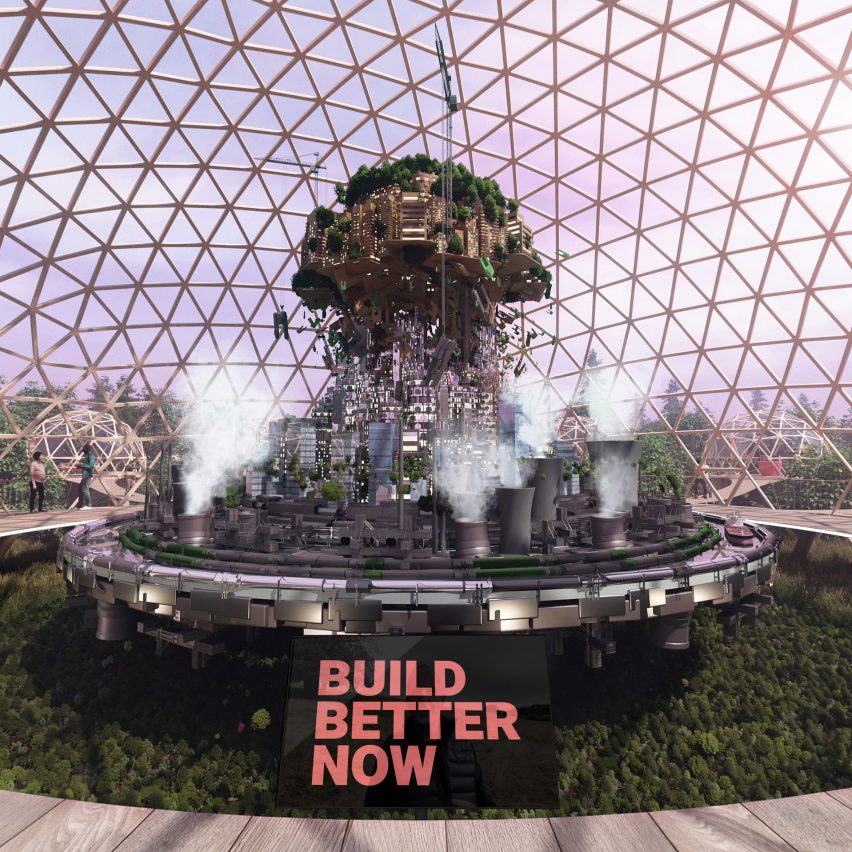
London studio Make has designed a virtual reality installation that sits at the centre of the Build Better Now pavilion for COP26.
Called Fountain of Circular Recovery, Make's installation is the centrepiece of the virtual pavilion, which was created by the UK Green Building Council (UKGBC) to showcase 17 "exemplary sustainable projects" during the COP26 climate conference.
The 360-degree installation is based on the form of a fountain and aims to explain both how construction has contributed to climate change and how future buildings could be less carbon intensive.
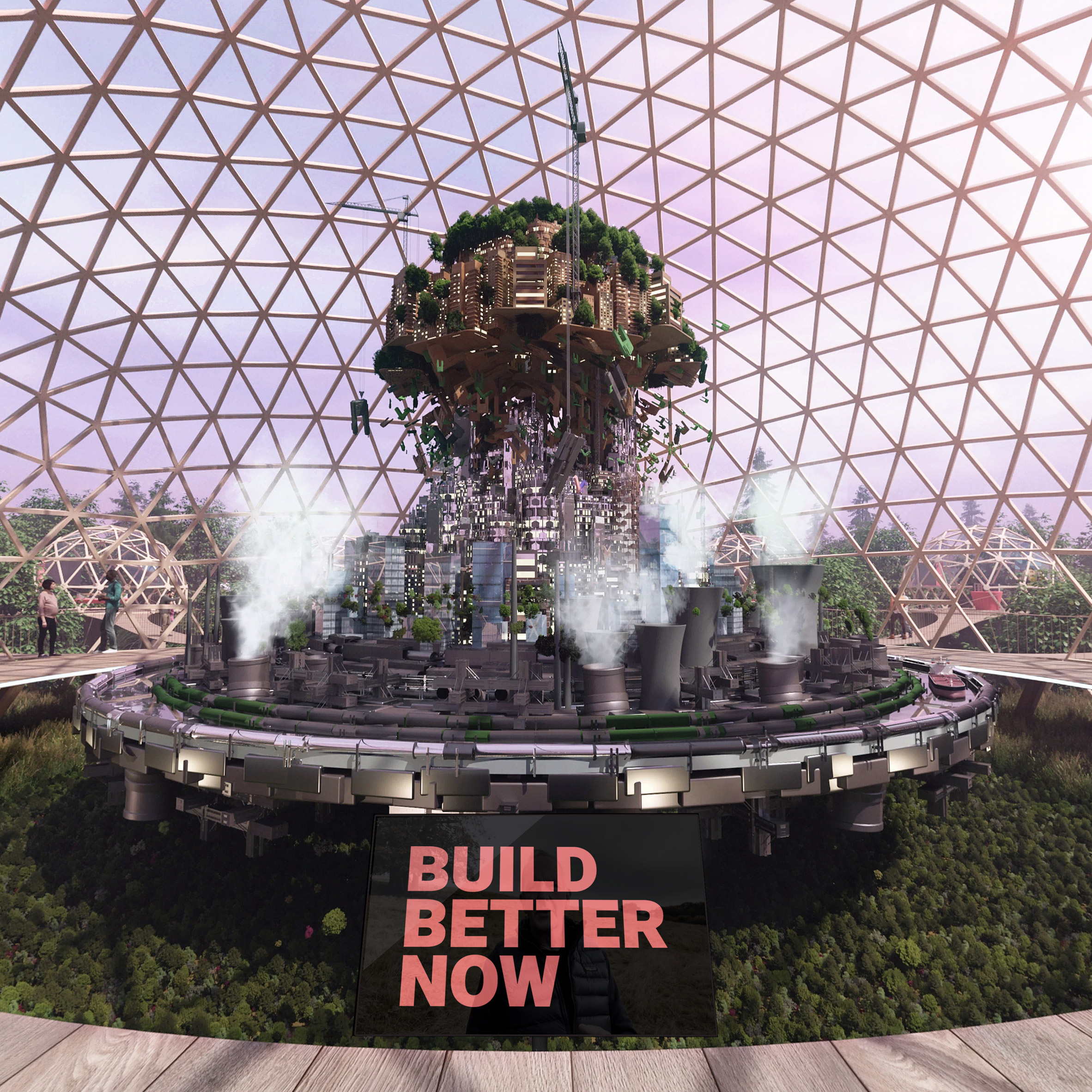
"The key design driver was illustrating – in an engaging 3D form – society's past, current and future predicaments and how the built environment can impact upon the natural environment both positively and negatively," said Make architect Jack Sargent.
"The fountain represents circularity, continuity and renewal – principles the built environment sector needs to engage with to a greater degree," he told Dezeen.
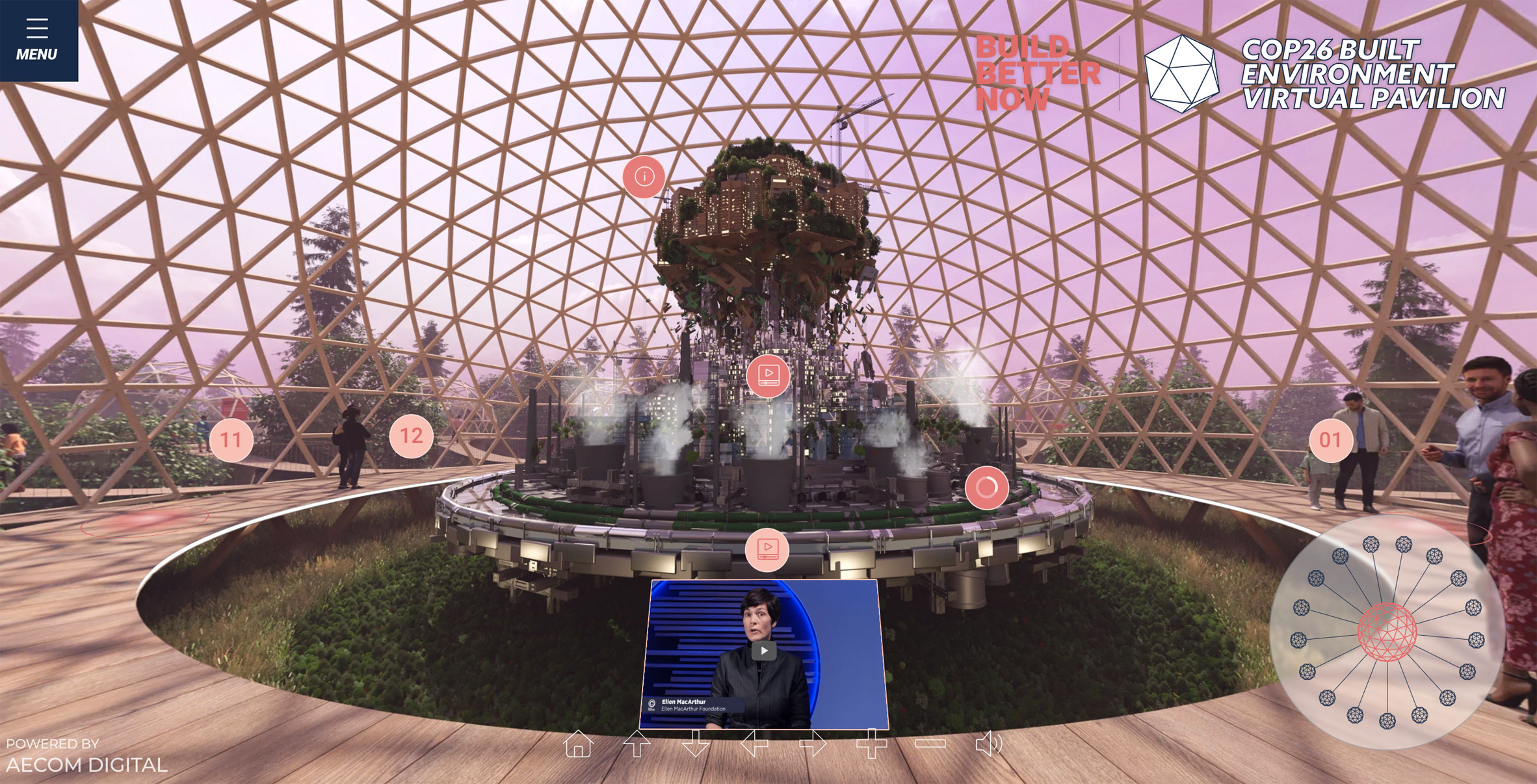
The lower layers of the fountain form at the centre of the installation signify past and current methods of construction, with the upper layers looking to the future.
An animation shows the trajectory that the UK is on using current construction methods and what needs to change to meet carbon targets.
"We sought to describe the chronological development of the built environment within a fountain framework, visually depicting the years 1990, 2021, 2030 and 2050," said Sargent.
"Concrete steel and glass – carbon-intensive materials that have been the basis for most large-scale construction in the 1990s through to today – inform the materiality in our base; above this we show possible future pathways with more sustainable materials such as timber," Sargent continued.
"The idea is that the concrete already built shouldn't be squandered; reuse should be encouraged. Hopefully we're heading towards a future whereby hybrid structures with timber additions densify the city."
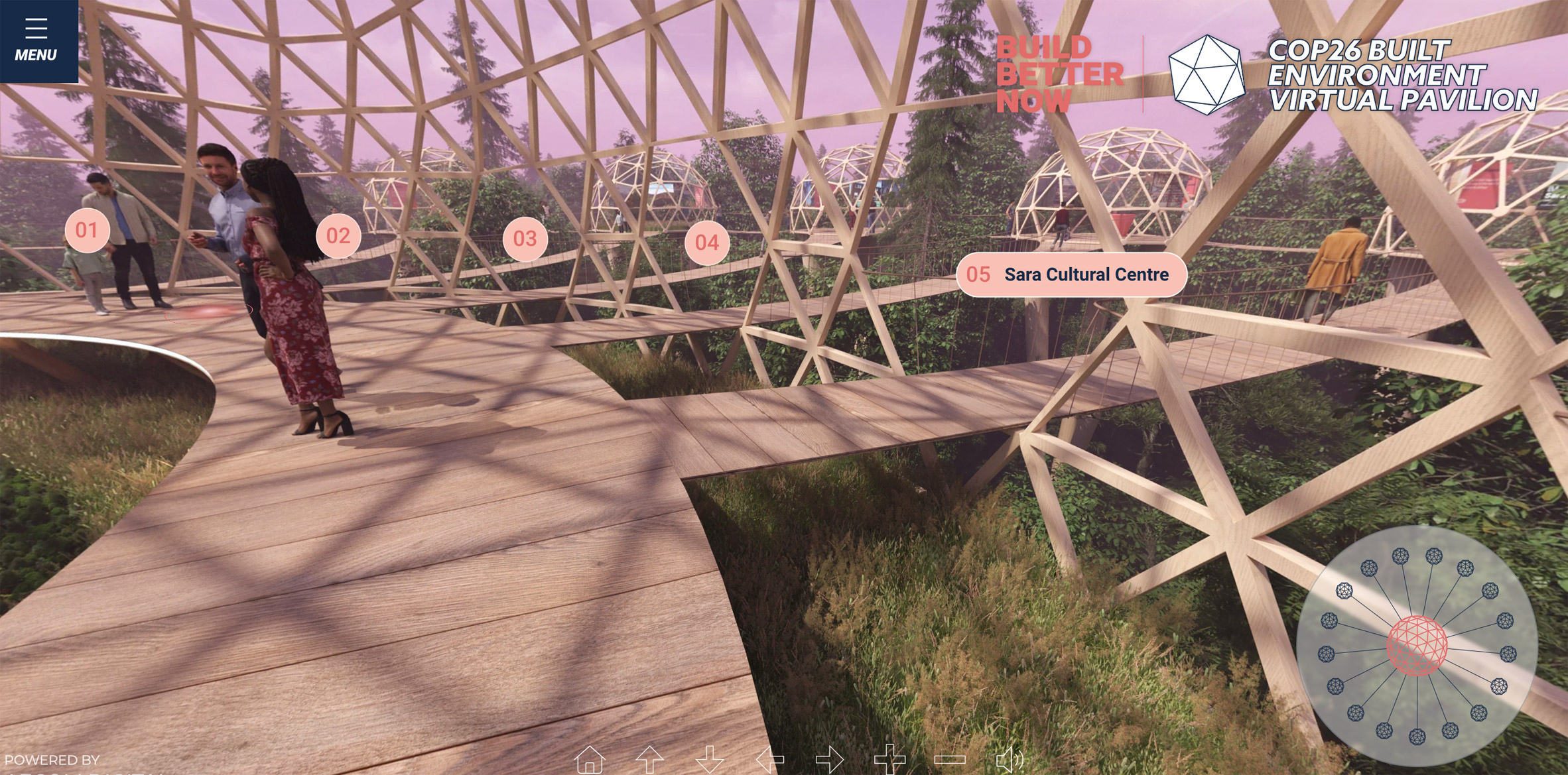
The installation stands at the centre of the Build Better Now virtual pavilion that was designed and developed by engineering studio AECOM in collaboration with exhibition designers Install Archive.
Visitors to the central space can navigate to a series of surrounding pods that each contain information about 17 projects chosen by the UKGBC to demonstrate sustainable ideals.
Each project is illustrated with images, a 3D model, a soundscape, text and links to more information.
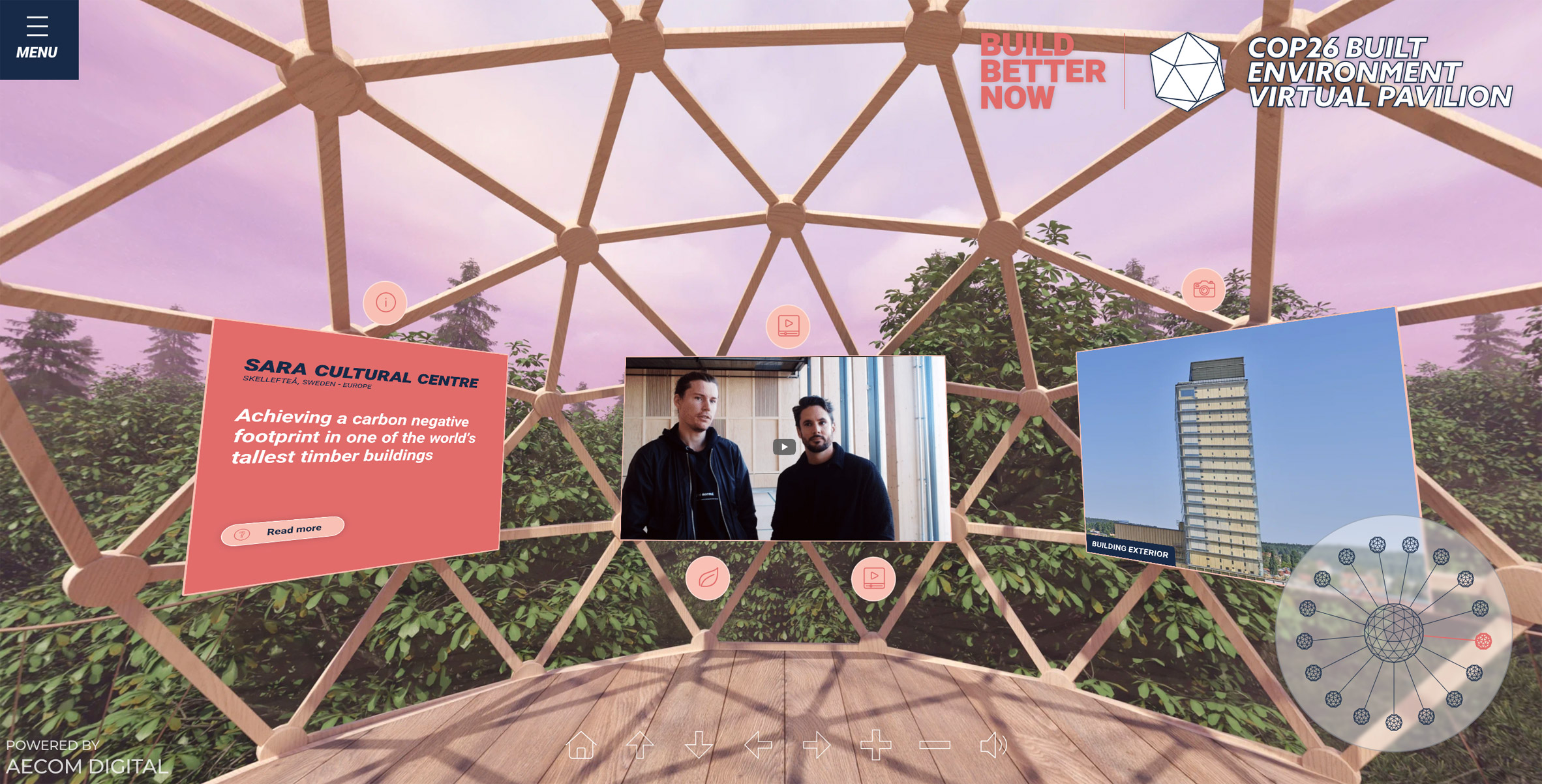
The pavilion was designed to inform people about the UK construction industry's role in climate change.
"Due to the scale of the projects we work on, the decisions of architects and other built environment professionals can produce carbon emissions that are thousands of times larger than a single person's," said Make architect Oliver Hall.
"It's critical that we as an industry educate ourselves on the impact we can make," Hall told Dezeen. "We have a duty to think critically about the design, procurement and construction of our ideas, as each step has an impact."
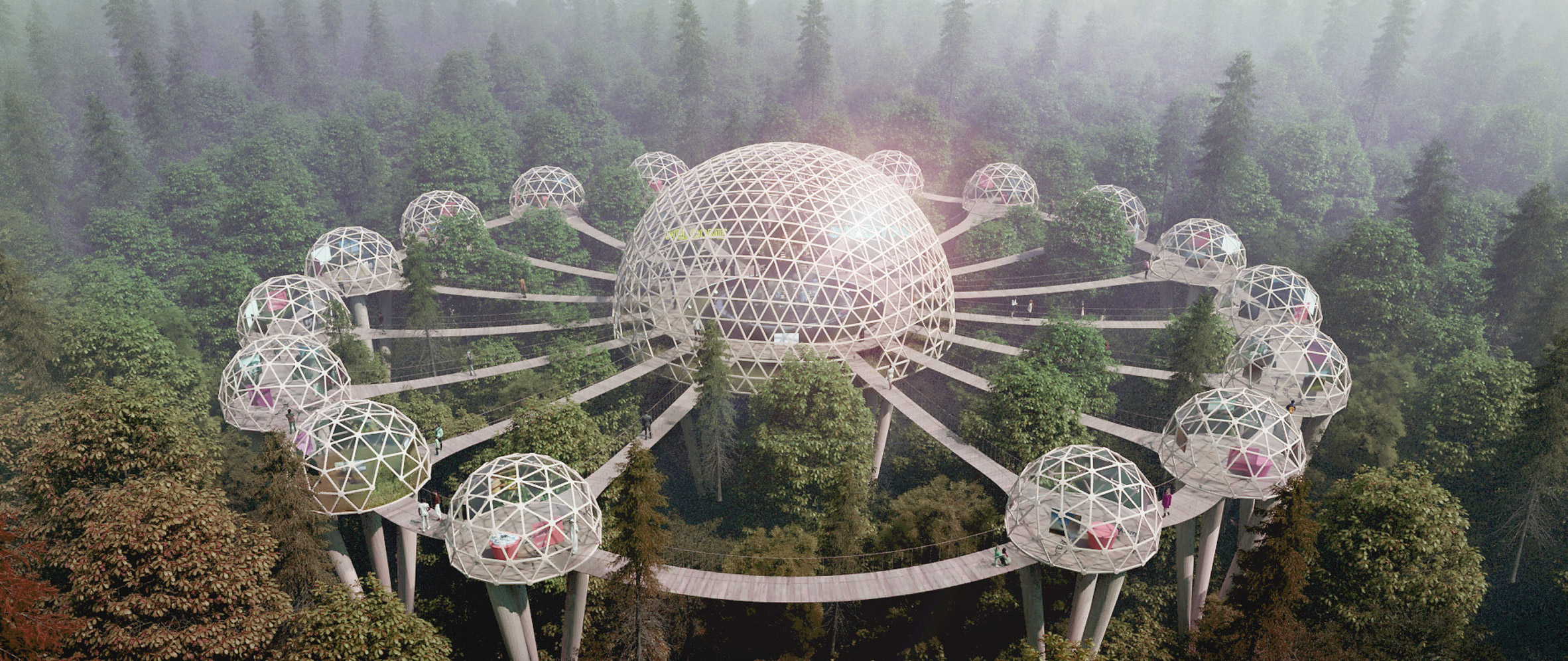
According to Hall, architects and designers need to think about designing simpler buildings to reduce the carbon impact.
"We need to question complexity, whether it's a broad architectural idea or a specific cladding system," he said.
"Designing for simplicity reduces materials, waste and carbon. We should ask ourselves is a particular material actually doing something for the building, or is it superfluous?" he continued.
"Is the building form too complex? Are we prioritising aesthetics that make the building perform worse, harder to build and thus more carbon-intensive – and if so, is this the right way forward?"
Over the next two weeks, we are publishing regular updates from the COP26 conference, which RIBA president Simon Allford described as "a critical juncture for humanity. See all our COP26 coverage here.
The imagery is courtesy of UK Green Building Council, unless stated.
COP26 takes place at SEC Centre in Glasgow from 1 to 12 November 2021. See Dezeen Events Guide for all the latest information you need to know to attend the event, as well as a list of other architecture and design events taking place around the world.
The post Make designs central installation for COP26 Build Better Now virtual pavilion appeared first on Dezeen.
Tidak ada komentar:
Posting Komentar